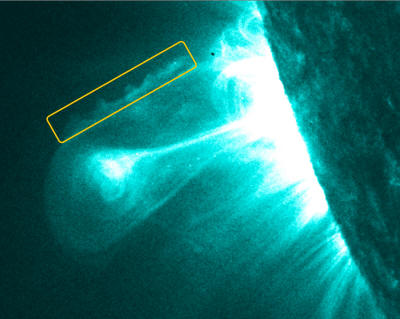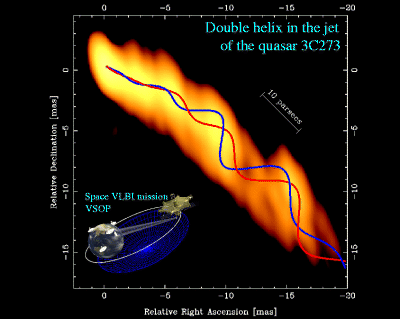|

by Stephen Smith
August 02, 2011
from
Thunderbolts Website

"Kelvin-Helmholtz"
instabilities
in a solar plasma eruption.
|
Clouds on the Sun are electrically
charged, so dynamic structures should be described using plasma
physics. |
"The plasma exhibited striations
and double layers; the electron distribution was non-Maxwellian;
there were all sorts of oscillations and instabilities."
Hannes Alfvén, shortly
after receiving his Nobel prize
According to a
recent press release,
physicists from the University of Warwick in Coventry, England
discovered regions of plasma instability occurring along the edges
of some solar filaments.
Warwick researchers,
"...spotted a familiar
pattern of instability on one flank of an exploding cloud of solar
material that closely paralleled instabilities seen in Earth’s
clouds and waves on the surfaces of seas."
The pattern seen within the exploding solar double layer was dubbed
a
Kelvin-Helmholtz instability because it seemed to be occurring
between two regions of different velocity.
In other words, fluid
dynamics theory is being attached to the phenomenon in an attempt to
explain its features.
The
Electric Universe hypothesis is based on electrodynamic
principles and not on electrostatic or kinetic behavior. Its basic
premise is that celestial bodies are immersed in plasma and are
connected by circuits. Since the Sun is "plugged-in" to the galaxy
and to its family of planets, it behaves like a charged object
seeking equilibrium with its environment.
An electric discharge in plasma creates a tube-like magnetic sheath
along its axis. If enough current flows through the circuit, the
discharge will cause the sheath to glow, sometimes creating a number
of other sheaths within it.
The sheath is called a “double layer.”
Double layers form when positive charges build up in one region of a
plasma cloud and negative charges build up nearby. A powerful
electric field appears between the two regions, which accelerates
charged particles.
The electric charges spiral in the magnetic
fields, emitting,
-
X-rays
-
extreme ultraviolet
-
sometimes gamma rays
Toroidal filaments couple to hourglass-shaped current sheets that
are subject to
diocotron instabilities: the current flow through
plasma sometimes forms vortices (below image) that change into distorted curlicue
shapes.

This phenomenon has been witnessed in many laboratory
experiments, as well as in the polar aurora.
Plasma physicist Dr. Anthony Peratt
wrote:
"One of the outstanding problems in
the propagation of electron beams along an axial magnetic field
is the breakup of the beam into discrete vortex-like current
bundles when a threshold determined either by the beam current
or distance of propagation is surpassed.
The phenomena observed
closely resembles that associated with the Kelvin-Helmholtz
fluid dynamical shear instability, in which vortices develop
throughout a fluid when a critical velocity in the flow is
exceeded..."
|


